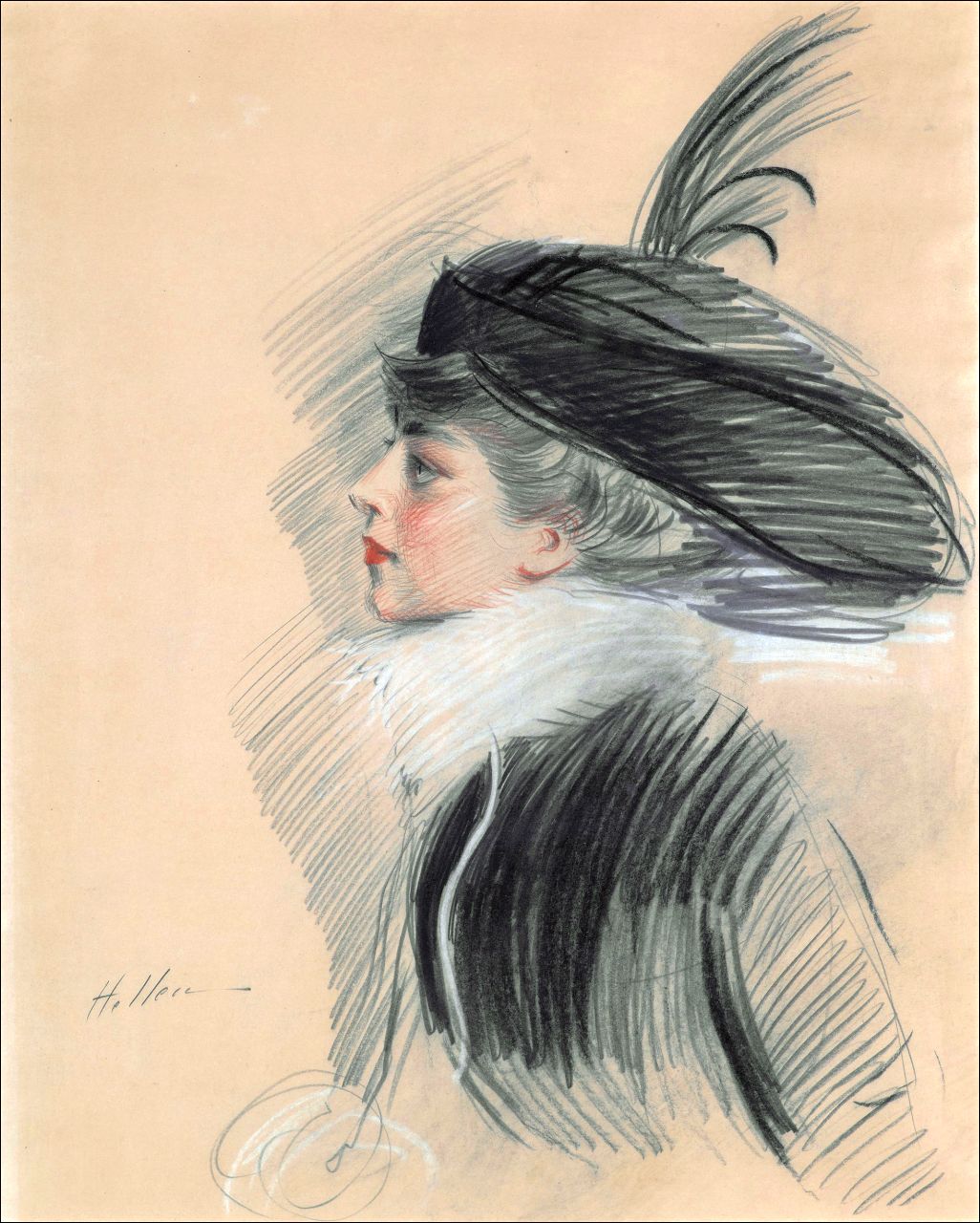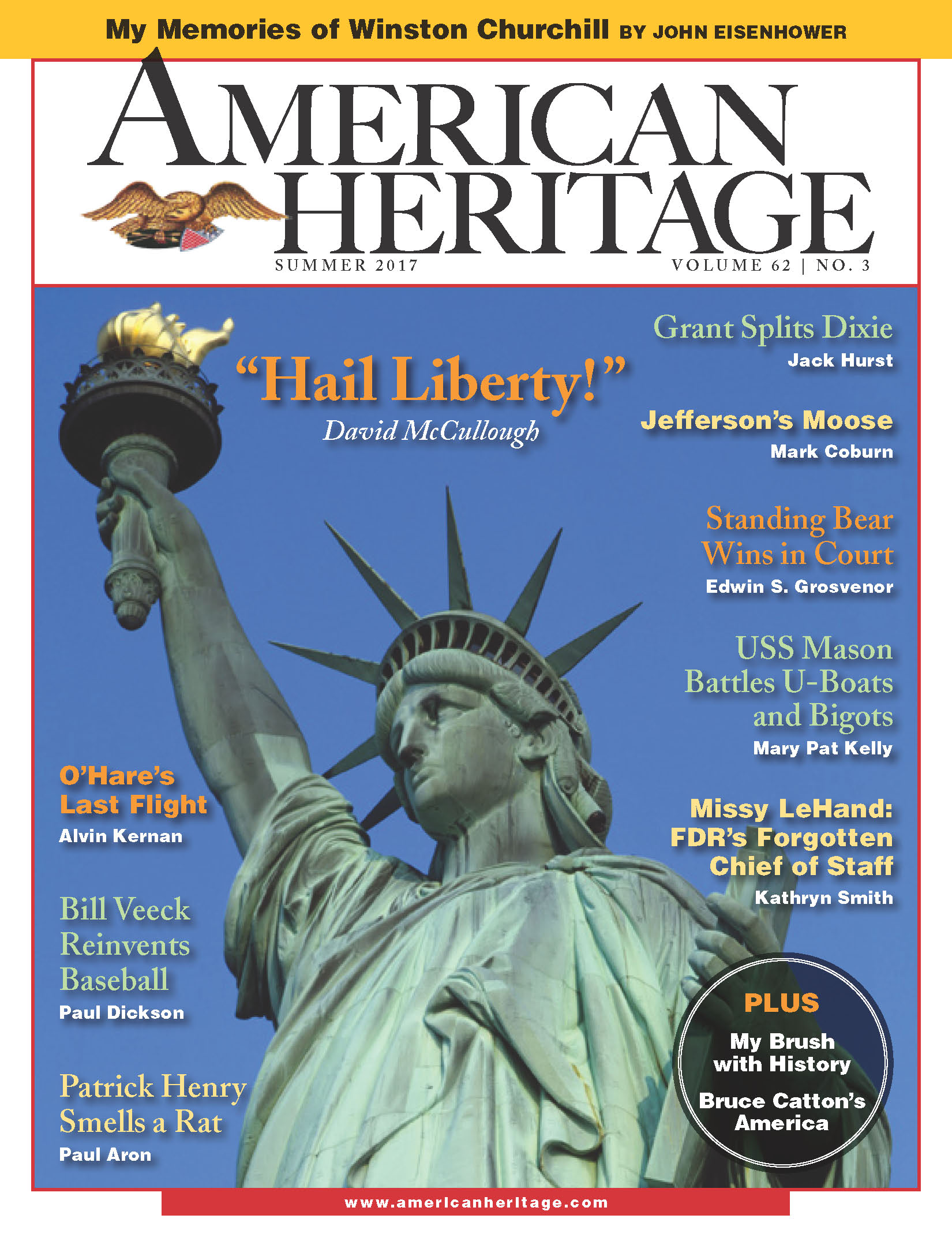She was the great financier’s librarian—and a good deal more
-
September 1999
Volume50Issue5
In 1683 the poet laureate John Dryden brought the word biography into the English language. He defined it as “the history of particular men’s lives.” That means a lot more than just the details of a person’s life, of course. If the subject is a household name, the biographer must separate the facts from the myths that inevitably sprout like mushrooms out of the folk memory of a great individual. Even more important, the biographer must provide both the background—the vast complexity of the civilization in which an individual lived his life—and minibiographies of important people in that life. And this must all be done without wearying the reader or losing the thread of narration.
Jean Strouse’s magnificent new biography of J. P. Morgan, Morgan: American Financier (Random House), certainly does all of this. That so richly lived and important a life could be so richly and importantly described in only 689 pages is a monument to the biographer’s art. At the same time, Strouse also manages, apparently effortlessly—a measure of just how much effort went into it—to bring to vivid life the world in which J. P. Morgan lived. It is a breathtaking accomplishment, all the more so because that world changed so dramatically during the course of Morgan’s career.
When he was born, to prosperous parents in Hartford, Connecticut, on April 17, 1837, the second Bank of the United States had been destroyed by Andrew Jackson only the year before, leaving the country without a central bank. Railroads were just beginning to creep across the American landscape. Steamers would not transport their first passengers across the Atlantic until the following year. The telegraph lay seven years in the future. No one thought of the United States as a financial or industrial power.

But by the time Morgan died, on March 31,1913, railroads, steamers, and the telegraph knit nearly the entire world together into a global economy. The United States had become the foremost financial and industrial power on earth. Woodrow Wilson, inaugurated just that month, would shepherd through Congress a bill establishing the Federal Reserve, once again giving the country a central bank.
Strouse expertly guides the reader through these often complex economic and political developments and shows how Morgan powerfully affected almost all of them. This not only makes her book by far the best, fullest, and, mercifully, most nonideological biography of J. P. Morgan ever written but serves as no mean introduction to a large portion of American business history as well.
Morgan’s life and career need not detain us here, however, for its high points are well known to the readers of this magazine. After all, Morgan has no less than six and a half column inches in the American Heritage 40-Year Cumulative Index, about the same as Thomas Edison and the Great Depression.
Instead, let’s take a look at one of the more fascinating people who played a major role in Morgan’s life: his librarian, Belle da Costa Greene. She is made even more fascinating to us by Strouse’s research and by the light she throws on Morgan’s personality.
For years Morgan had been collecting rare books and manuscripts, which he brought to the United States. (Much of the art he was buying at the same time was kept abroad because the government had imposed a whopping 20 percent duty on works of art, about as stupid and nationally impoverishing a use of the tariff as one could conceive.) By the turn of the century, he had more books than places to put them, a condition any book collector, however modest, will ruefully identify with. In 1902 he asked Charles McKim to design a library for him and accepted the restrained classical design McKim produced. Typically, Morgan spared no expense, authorizing McKim to have the marble blocks of the walls shaped with such precision that they would not require mortar. This added fifty thousand dollars to the price, which finally came to $1.2 million.
As the most sumptuous private library in the United States neared completion and was about to be filled with his literary treasures, Morgan needed a librarian. His scholarly nephew, Junius Morgan, who often helped him in cultural matters, suggested a young woman he had met at the Princeton University library, Belle da Costa Greene. Morgan hired her for seventy-five dollars a month, nearly double what she had been earning.
Greene was not your stereotypical librarian, to put it mildly. For one thing, she possessed a considerable sexual magnetism, her dark hair and olive complexion set off by striking light green eyes. For another, she knew how to make the most of it. “Just because I am a librarian,” she supposedly said, “doesn’t mean I have to dress like one.” Bernard Berenson, the noted art critic, with whom she had a long affair, called her “the most vitalizing person I have ever known.”
Greene said that her exotic looks and odd middle name came from her Portuguese grandmother and that her mother, whose maiden name had been Van Vliet, was “a native of Richmond, Va., and a proud and cultivated lady of old-fashioned dignity, [who] moved with her children to Princeton, New Jersey, where she gave music lessons to support them while they attended local schools.”
In fact, as Strouse discovered, virtually none of this is true. Greene’s real name was Belle Marion Greener. Her mother’s name was Fleet, not Van Vliet, and her grandmother was not Portuguese but an American named Hermione C. Peters. And they came not from Richmond but from Washington, D.C., where the 1850 census listed the family as mulatto.
Greene’s father, Richard Theodore Greener, was black. He had been born in Philadelphia in 1844, and after his father deserted the family to search for gold in California, his mother moved to Cambridge, Massachusetts, when he was nine. He took a series of jobs as office boy to help support the family but spent as much time reading as he could. He so impressed one of his employers with his love of learning that the man sent him to a private preparatory school in Oberlin, Ohio, one of the very few such schools in the country that would accept black students at that time. Admitted to Harvard in 1865, he graduated in 1870, the first black man to receive a degree from the country’s oldest university.
Greener then earned a law degree from the University of South Carolina (the only Southern school to attempt integration during Reconstruction), where he also taught Greek, Latin, mathematics, and constitutional history. In his spare time he reorganized and classified the school’s twenty-six-thousand-book library.
But as Reconstruction ended in the late 187Os, Greener, no matter how gifted and educated, found it increasingly difficult to function as a black man in the hostile white world around him. The strain told on his family life, and he and his wife separated in the late 1890s. Being very light-skinned, his wife and his children chose another way of dealing with a bigoted white world: They “passed.” In the New York City Directory, Greener became Greene.
But if Belle da Costa Greene left her black ancestors behind her, she gratefully inherited her father’s love of books. “I knew definitely by the time I was twelve years old that I wanted to work with rare books,” she told the New York Evening Sun years later. “I loved them even then, the sight of them, the wonderful feel of them, the romance and thrill of them. Before I was sixteen, I had begun my studies, omitting the regular college courses that many girls take before they have found out what they want to do.”
Greene very quickly became far more than merely Morgan’s librarian. In Strouse’s words, she was “his agent, accomplice, and personal confidante as well.” Her goal, she said, was to make J. P. Morgan’s library “ pre-eminent , especially for incunabula [books printed before 1501], manuscripts, bindings and the classics.” She was soon indispensable to achieving this goal. Traveling often to Europe, she stayed at the finest hotels, met art scholars and bibliophiles as an equal, and snapped up treasure after treasure.
When Morgan died in 1913, he left Belle Greene fifty thousand dollars in his will, enough capital for her to live on modestly. At that time she was earning a salary of ten thousand dollars a year at the library, a huge sum, especially for a woman, in those days. So she stayed at the library for nearly the rest of her life. She retired only in 1948, two years before her death. By then she was known, deservedly, as “the soul of the Morgan Library.”
Under J. P. Morgan, Jr., she continued to collect for the library, and by the time she retired, if the library was not perhaps “ pre-eminent ,” it was certainly the equal of any great library of rare books in the world. The Morgan, for instance, has no fewer than three Gutenberg Bibles, two more than the vast New York Public Library, located a few blocks away, possesses.
Jean Strouse tells a wonderful story of the relationship between Morgan and Greene. Morgan hated paying customs duties, especially on art objects, and, like countless of other travelers before and since, evaded them whenever possible. He quickly enlisted Greene as an ally in tax evasion. One year she managed, by artfully letting the customs agents find several dutiable items of hers in her luggage, to draw their attention away from a painting, three bronzes, and a very expensive watch he had asked her to buy in London. “‘When I landed at the library with all of JP’s treasures … ,’ she reported to a friend, ‘well he & I did a war dance & laughed in great glee.’”
The image of the elderly J. P. Morgan, the most powerful private individual in the world, dancing a jig of glee with his young and vivacious librarian over some successful naughtiness is worth the price of this incomparable book all by itself.


